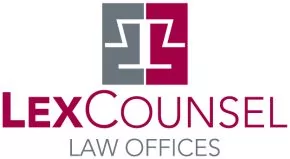The Insolvency and Bankruptcy Code, 2016 ("Code") has been passed by the Lok Sabha on May 5, 2016 and Rajya Sabha on May 11, 2016, and shall come into force, once, it receives the Presidential assent. The Code, seeks to consolidate and amend the existing laws on bankruptcy and insolvency matters and creates a unified legal framework for resolution of insolvency/bankruptcy issues in a time bound manner.
A brief snapshot of certain key features of the Code, with a particular focus on corporate insolvency process, is given as under:
(i) Applicability.
- The Code applies to companies, limited liability partnerships, partnership firms, other corporate persons, and individuals, and any other body specified by the Government.
(ii) Insolvency Board, professionals and agencies.
- The Code envisages that the insolvency resolution processes will be conducted by insolvency professionals ("IPs"). The IPs will be licensed professionals and will be members of insolvency professional agencies ("IPAs"), which will be created for regulation of such IPs.
- The Code also provides for establishment of information utilities ("IUs"), for collection, collation and dissemination of financial information to facilitate insolvency resolution.
- The regulation and operation of these IPs, IPAs, and IUs is to be overseen by an Insolvency and Bankruptcy Board ("Board") established under the Code.
(iii) Adjudicating Authority.
- The adjudicating authority for insolvency issues of a Company/LLP is prescribed to be the National Company Law Tribunal ("NCLT") and National Company Law Appellate Tribunal ("NCLAT"), and for individuals and partnership firms, it is the extant Debt Recovery Tribunal ("DRT") and Debt Recovery Appellate Tribunal ("DRAT").
(iv) Corporate Insolvency Resolution Process.
A. Initiation of Proceedings.
- Where any corporate debtor ("CD") commits a default in payment of debt, insolvency resolution process under the Code can be initiated by a financial creditor ("FC"), either by itself or jointly with other financial creditor, an operational creditor ("OC") or by the CD itself, by filing an application in the NCLT. A default, for this purpose, includes a default in respect of a financial debt owed not only to the applicant financial creditor but to any other financial creditor of the CD.
- The Code distinguishes between a FC and OC, and lays down different procedure for initiating the proceedings. FC is a creditor to whom a financial debt is owed and includes anyone to whom such debt is assigned/transferred. OC is one to whom an operational debt is owed i.e., debt in respect of goods or services including employment or debt arising under any law in force for the time being and payable to Central Government/State Government/Local Authorities.
- The FC has to move an application before the NCLT showing them the proof of default and proposing an interim IP. The NCLT will then ascertain the existence of default from the records of an IU (i.e. information utilities) or on the basis of other evidence furnished by the creditor. However, in the case of an OC, the OC has to first serve a demand notice along with the proof of default, giving the debtor ten days to respond to dispute the claim. If the claim remains undisputed, then the OC can file an application before the Adjudicating Authority.
B. Broad Steps after admission of application.
Broadly, the insolvency resolution process, after an application has been admitted by the Adjudicating Authority, will entail the following steps:
- Declaration a moratorium period for prohibiting actions such as, institution of suits, continuation of pending suits/ proceedings against the CD including execution of any judgement, decree or order; disposal/encumbering of CD's assets or rights/interests therein; any action to foreclose, recover or enforce any security interest created by the CD, etc.
- Appointment of an interim IP.
- Issuance of public announcement of the initiation of insolvency resolution process and call for the submission of claims.
- Interim IP inter alia takes over the management and powers of the board of directors of the CD, and collects all information relating to assets, finances and operations of the CD for determining its financial position; collates all claims submitted by the creditors and constitutes a Committee of Creditors ("COC").
- The COC thereafter either resolves to appoint the interim IP as the IP or replaces the interim IP by appointing a new IP, in accordance with the prescribed procedure.
- The IP will then take over the management and assets of the CD, and can exercise the wide powers granted to it, in the manner prescribed under the Code. It will prepare an information memorandum in relation to the CD, on the basis of which the resolution applicant will prepare a resolution plan. IP will scrutinize the resolution plan and present it to the COC.
- The COC approved plan will be submitted to the Adjudicating Authority, for its acceptance, and it is only when the Adjudicating Authority, gives it a final nod that the resolution plan becomes binding upon all the stakeholders and the insolvency resolution process of the CD is initiated.
- In case the Adjudicating Authority rejects the plan, the liquidation process of the CD will commence.
C. Time Period.
- The Code mandates completion of the insolvency resolution process within a period of 180 days. This period can be extended for a period of up to 90 days, upon an application filed by the IP subject to authorization by the COC by a vote of 75%.
- The Code also envisages a fast track insolvency of CDs, within 90 days (further extendable upto 45 days), which has income and assets value below such limit, or which has such class of creditors or such amount of debt or such other category of persons, as notified by the Central Government.
(v) Liquidation Proceedings.
- Liquidation proceedings can be initiated against a CD if:
- The resolution plan has not been approved by the Adjudicating Authority, or it does not receive a resolution plan within the prescribed time period;
- If the COC with a 75% majority vote, decides to liquidate the debtor, but before confirmation of the resolution plan; or
- If an application is made for liquidating the CD in case of any violation of the resolution plan.
- The Liquidator will collate all the claims, verify and then either admit the claims or reject them. If any creditor's claim has been rejected, it may appeal to the Adjudicating Authority. The Adjudicating Authority is also empowered to avoid any preferential, undervalued and extortionate transactions, undergone at relevant time, which will adversely affect the assets of CD and eventually right of creditors, in the manner prescribed under the Code.
- The assets of the CD, in case of liquidation will be distributed in the following order: (i) fees of insolvency professional and costs related to the resolution process, (ii) workmen's dues and secured creditors, (iii) employee wages, (iv) unsecured creditors, (v) government dues and remaining secured creditors (any remaining debt if they enforce their collateral), (vi) any remaining debt, and (vii) shareholders.
(vi) Cross-Border Insolvency.
- The Code also provides that the Government may, by notification, direct application of its provisions, subject to such conditions as may be specified, in relation to assets or property of a CD, including a personal guarantor of a CD, situated in a country outside India with which reciprocal arrangements have been made by the Government.
(vii) Offences and Penalties.
- The Code imposes punishment and penalties for offences committed by an officer of the CD, such as concealment of property of a CD; undergoing transactions to defraud the creditors; misconduct during the course of insolvency resolution process; falsification of books, papers, securities; for willful and material omissions from statements relating to CD; misrepresentations to creditors and etc.
- Such officer can be punishable with imprisonment of not less than three years but which may extend to five years, or with fine of not less than one lakh rupees, but which may extend to one crore rupees, or with both. That said, this doesn't render a person liable to any punishment if he proves that he had no intent to defraud or to conceal the state of affairs of the CD.
- For offences committed under individual insolvency (such as providing false information), the imprisonment varies based on the offence.
- Further, if anyone initiates the insolvency process with a fraudulent intention, a penalty ranging from Rupees One Lakh to Rupees One Crore may be imposed upon such applicant.
The process under the Code requires establishment of several new entities, and accordingly it may take several months before its effective implementation. That said, it may be worthwhile for companies facing difficulties in meeting their debt obligations, to start the process of re-examining their future approach, when the stringent insolvency ecosystem under the Code does come into existence.
The content of this article is intended to provide a general guide to the subject matter. Specialist advice should be sought about your specific circumstances.


